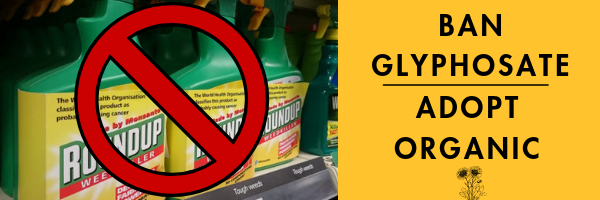07
Mar
Glyphosate Exposure Associated with Liver and Metabolic Disorders in Children, Young Adults

(Beyond Pesticides, March 7, 2023) Exposure to glyphosate (Roundup) and its breakdown products is associated with an increased risk of liver and metabolic disorders in children and young adults, according to research published in Environmental Health Perspectives earlier this month. While glyphosate has developed a well-deserved reputation as a carcinogen, research is finding that cancer is one of a myriad of chronic diseases associated with the notorious chemical. As this body of literature grows, growing awareness by the public is increasing pressure on the U.S. Environmental Protection Agency to cancel its allowed uses.
Researchers began their investigation concerned about the rise of liver disorders and metabolic syndrome among young people. This trend has been pronounced among populations of color. The worrying increase has led many to consider synthetic chemical exposure as a contributing factor, as lack of diet and exercise is unlikely to account for the entirety of the increase.
To better understand these impacts, researchers enrolled existing participants in the CHAMACOS (Center for the Health Assessment of Mothers and Children of Salinas) study, a long running cohort of mothers and their children born between the years 2000 and 2002 in the Salinas Valley of California. Enrolled participants consistent mostly of farmworker families who were studied (including assessment of body measurements, contaminants in blood and urine, diet, interview questionnaires) at delivery and followed at one to two year intervals. For the present study, 480 participants who completed the 18 year old follow up visit were enrolled in a nested case-control study. Out of this 60 cases were selected based on blood tests for liver damage while 91 controls without liver damage were used as a comparison. Â
Scientists reviewed urine samples stored from pregnancy, and at ages 5, 14 and 18 years old. These data were considered against an analysis of the amount of agricultural-use glyphosate occurring in and around each enrolled family’s residence. Â
The results confirm there is cause for concern among young people’s exposure to glyphosate. At age 5, urinary levels of glyphosate’s primary breakdown product aminomethylphosphonic acid (AMPA) was associated with an increase in transaminases, liver enzymes that can cause harm at high levels in the body, as well as a nearly 2x increased risk of metabolic syndrome. This trend associating glyphosate exposure with adverse effects held throughout early adulthood. Glyphosate and AMPA exposure significantly increased risk of metabolic syndrome in 14-year-olds. When paired with data on the amount of agricultural use glyphosate in a given area, having lived near an a site where glyphosate was applied from birth until 5 years of age was associated with having metabolic syndrome at age 18.
This is not the first study linking glyphosate to liver damage. A 2015 study determined that chronic exposure to even ultra-low doses of the chemical in drinking water could result in harm to the kidney and liver. A study in 2017 connected the chemical to the development of non-alcoholic fatty liver disease (NAFLD), and a 2019 study built on those findings, showing higher levels of glyphosate in the urine of individuals diagnosed with NAFLD. A 2022 study likewise found that glyphosate before and after birth induces liver damage, posing a significant risk to pregnant women, infants, and children.
NAFLD and other liver disorders can increase the risk of metabolic syndrome. And a growing body of literature has implicated pesticide exposure and the rise of metabolic disorders and obesity, separate from concerns over diet and fitness. Researcher Bruce Blumberg, PhD, of University California Irvine has published extensively on the issue – a transcript of his 2018 talk to the National Pesticide Forum was published in Pesticides and You and is available on Beyond Pesticides’ Youtube page.
For additional information on the connection between pesticides and chronic disorders, read Sicker, Fatter, Poorer by Leonardo Trasande, MD – see Beyond Pesticides’ review of the book, and Dr. Trasande’s discussion at Beyond Pesticides 2021 workshop on protecting children from pesticides on our Youtube page. Â
All unattributed positions and opinions in this piece are those of Beyond Pesticides.










